- Artificial Intelligence (AI) is swiftly redefining the landscape across various industries, and the field of interior design is riding on the crest of this wave of innovation. As we delve into how AI is revolutionizing home aesthetics, it becomes clear that we're stepping into a new era where design is not just about creating visually appealing spaces but about crafting environments that are personalized, efficient, and dynamically aligned with the individual's lifestyle and evolving preferences. The advent of AI in interior design has been a game-changer, offering tools and applications that simplify complex processes, from conceptualization to execution, making design more accessible and less time-consuming.
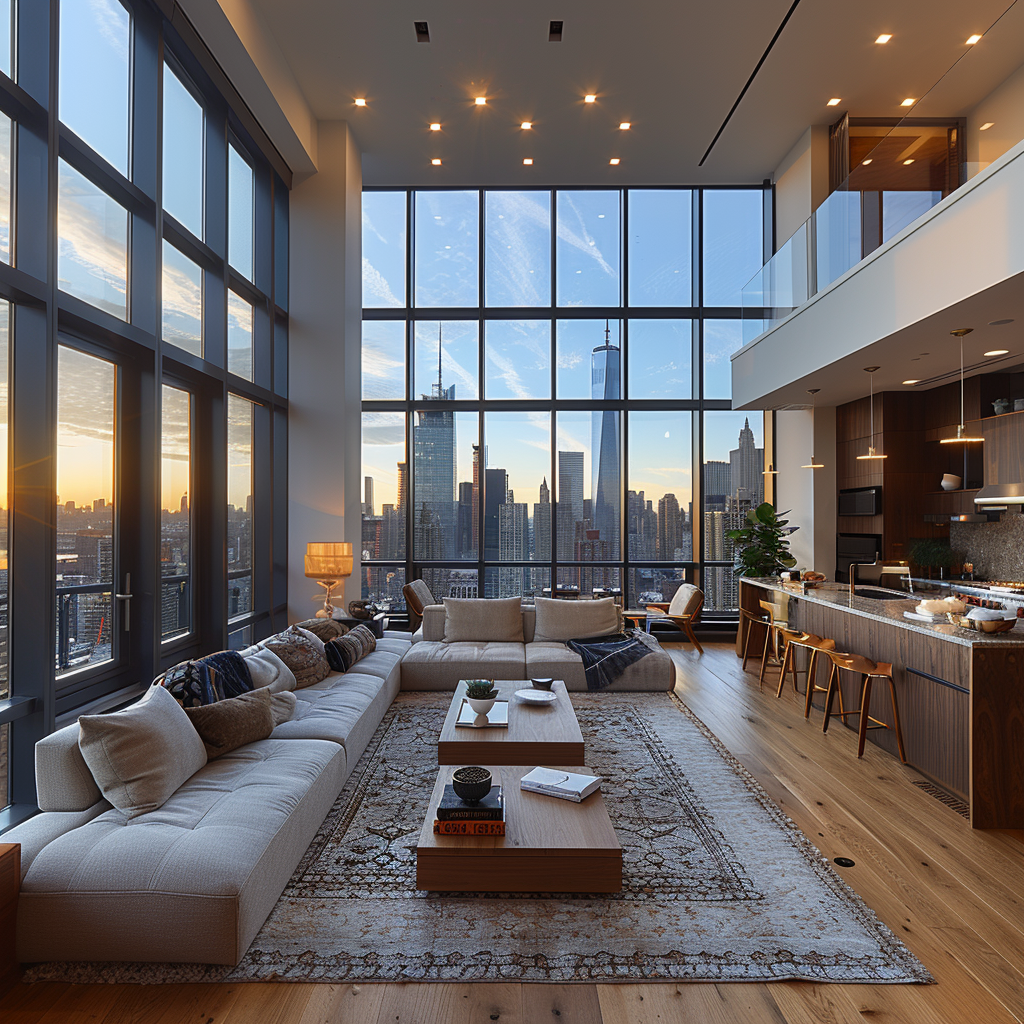
- AI's influence in interior design manifests in several groundbreaking ways. It brings to the table advanced visualization tools that allow clients and designers to explore and experiment with different design elements before making any physical changes. This capability not only streamlines the decision-making process but also significantly reduces the cost and resources associated with traditional trial-and-error methods. Furthermore, AI algorithms excel in analyzing and interpreting vast amounts of data related to personal tastes, spatial requirements, and functional needs, enabling the creation of tailor-made design solutions that truly reflect the homeowner's personality.
- But perhaps the most exciting prospect is AI's ability to create adaptive living spaces. Imagine a home that adjusts its lighting, temperature, and even layout to suit your daily routines and preferences, evolving alongside your lifestyle. This level of customization and efficiency heralds a future where our living environments are not just spaces we inhabit but intelligent ecosystems that enhance our quality of life in myriad ways.
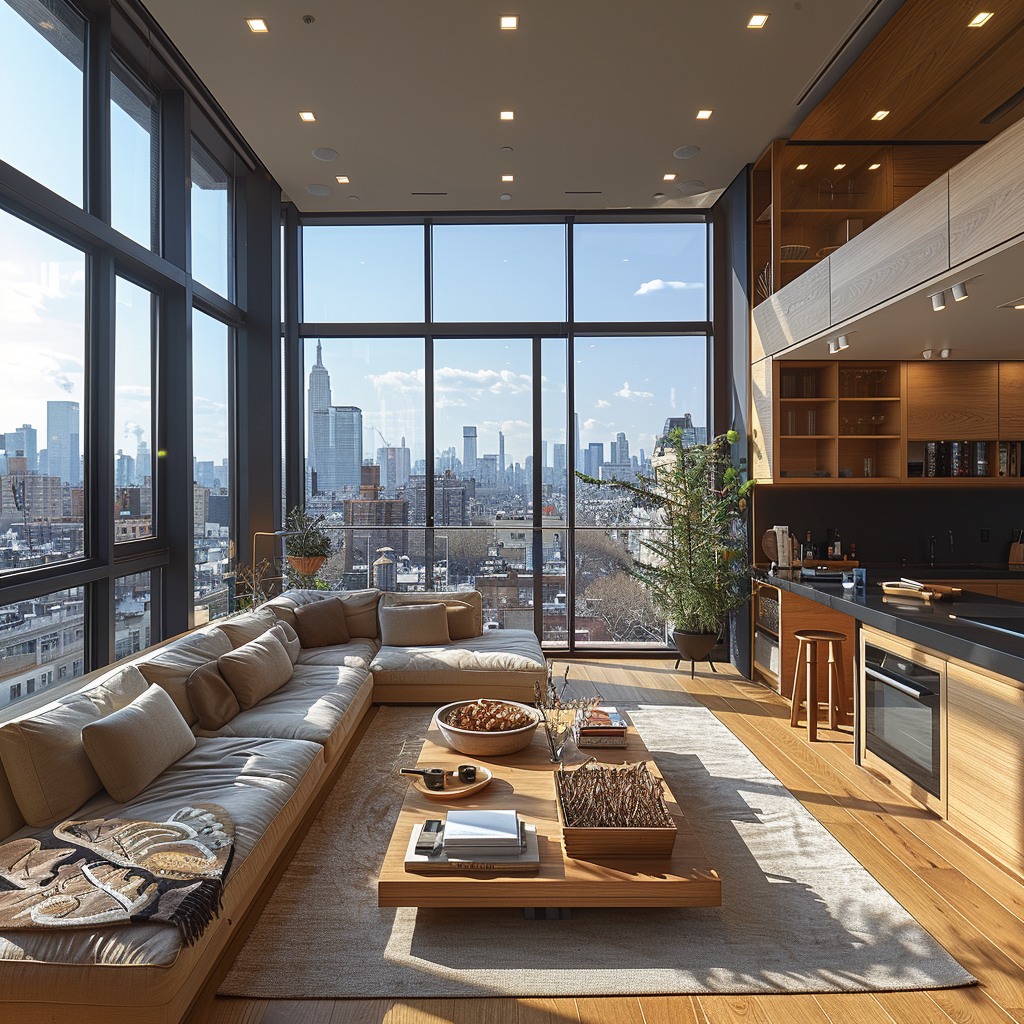
- As AI continues to evolve and integrate deeper into the realm of interior design, we can anticipate even more innovative solutions that challenge our traditional notions of home aesthetics. For both designers and homeowners, the promise of AI is not just in creating spaces that look beautiful but in designing environments that are a true extension of the individual, offering a personalized, efficient, and creative living experience like never before.
Personalized Design Experiences
-
The advent of Artificial Intelligence (AI) in the realm of interior design has ushered in an era of personalized design experiences that cater to the unique preferences, lifestyle needs, and spatial requirements of each homeowner. AI algorithms stand at the forefront of this revolution, boasting the extraordinary ability to sift through and analyze vast amounts of data to understand the intricate details of an individual’s design preferences. This technological prowess enables the crafting of interior design solutions that are not only highly personalized but also reflective of the homeowner's unique personality and tastes.
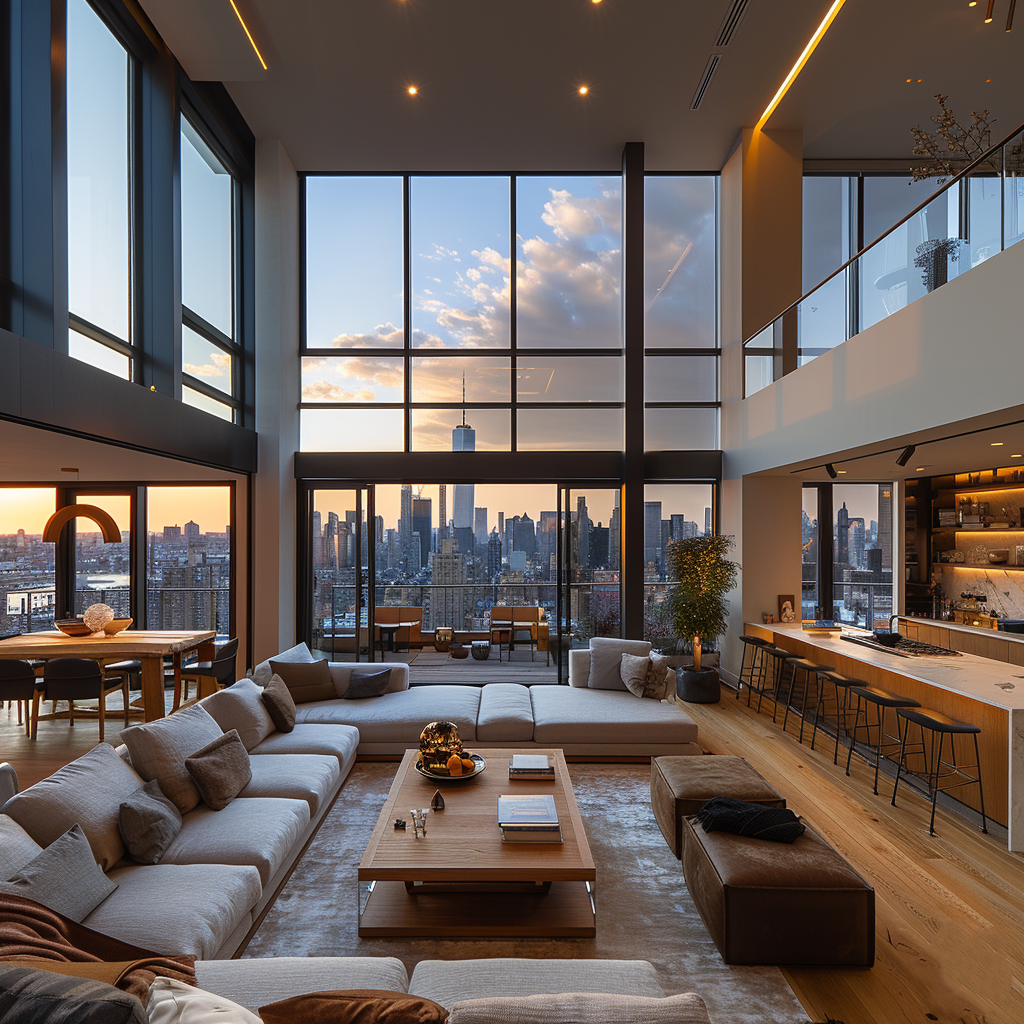
-
AI-powered platforms have become increasingly adept at offering tailored recommendations that resonate with individual aesthetic sensibilities. From suggesting harmonious color schemes that evoke a desired mood to determining furniture arrangements that optimize space and functionality, AI facilitates a level of customization previously unattainable. These platforms can even predict decor styles that align with the homeowner's vision, ensuring every element within the living space contributes to a cohesive and personalized environment.
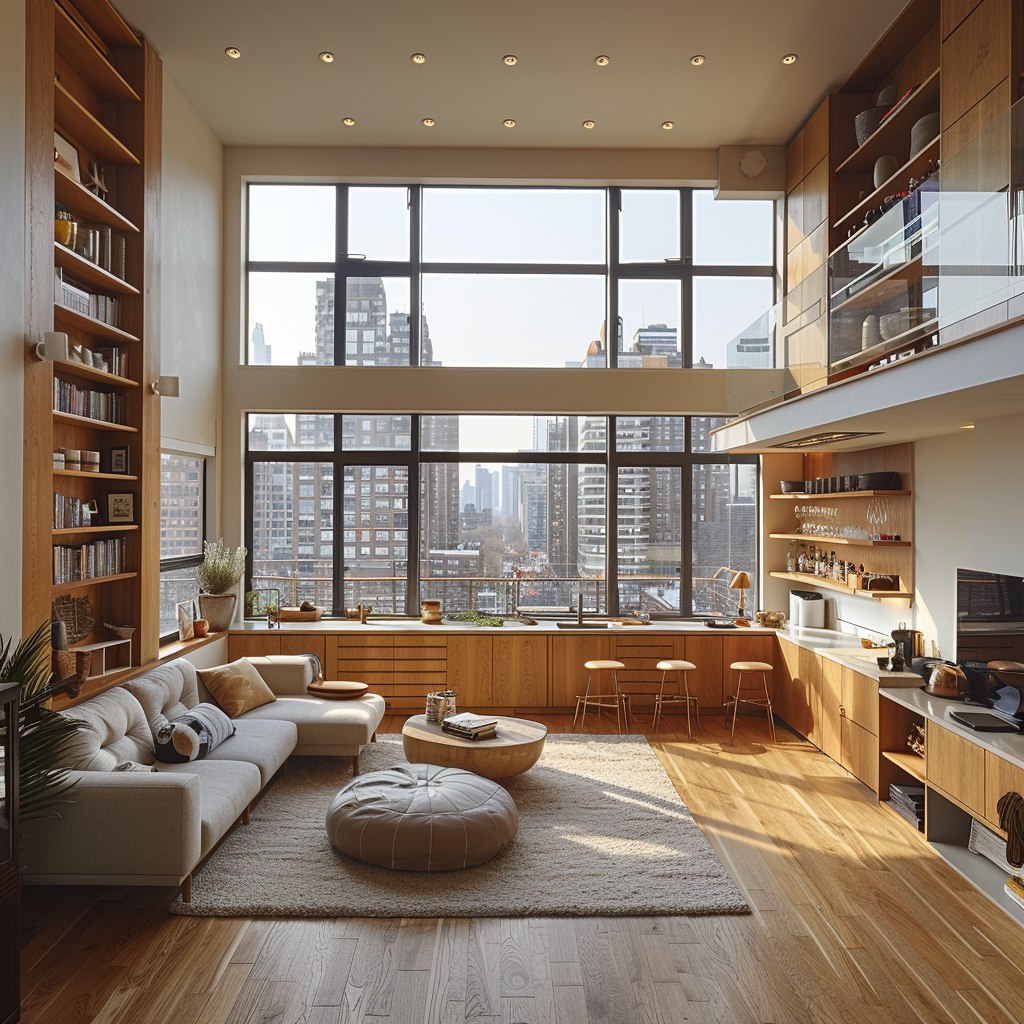
-
The beauty of AI in interior design lies in its ability to create living spaces that are truly personalized. By leveraging AI, designers and homeowners can collaborate more effectively, translating personal visions into tangible realities with greater accuracy and efficiency. The result is a living space that not only meets functional requirements but also serves as a profound expression of the homeowner’s identity. This marks a significant departure from one-size-fits-all design approaches, offering a future where every home tells a unique story, deeply resonant with the individuality of its inhabitants.
Enhanced Visualization Tools
- The integration of Artificial Intelligence (AI) into interior design has catalyzed a monumental leap in visualization capabilities, marking one of AI's most impactful contributions to the field. Through AI-driven applications, users are now empowered to explore realistic 3D renderings of their envisioned spaces with an accuracy and depth previously unimaginable. This advancement in visualization tools allows for an immersive experience, where different lighting conditions, furniture placements, and color schemes can be simulated with precision, providing a comprehensive virtual walkthrough of potential designs.

- Such enhanced visualization capabilities are revolutionary, not just for the aesthetic aspect of design, but for the practicalities of decision-making and project execution. By offering a detailed preview of how design choices will manifest in physical space, these AI-driven tools significantly mitigate the risks and uncertainties traditionally associated with interior design. Homeowners and designers alike can experiment with various configurations and themes in a virtual environment, making informed decisions without the need for physical samples or mock-ups. This drastically reduces the time, cost, and resources typically consumed by the trial and error process, streamlining project timelines and enhancing client satisfaction.
- Moreover, the ability to accurately visualize a space before any physical changes are made encourages creativity and experimentation. Designers can push the boundaries of traditional design, exploring innovative concepts and bold ideas with the confidence that comes from detailed pre-visualization. Clients, on their part, gain a clearer understanding and comfort with the design process, facilitating better communication and alignment of expectations between them and the designers.
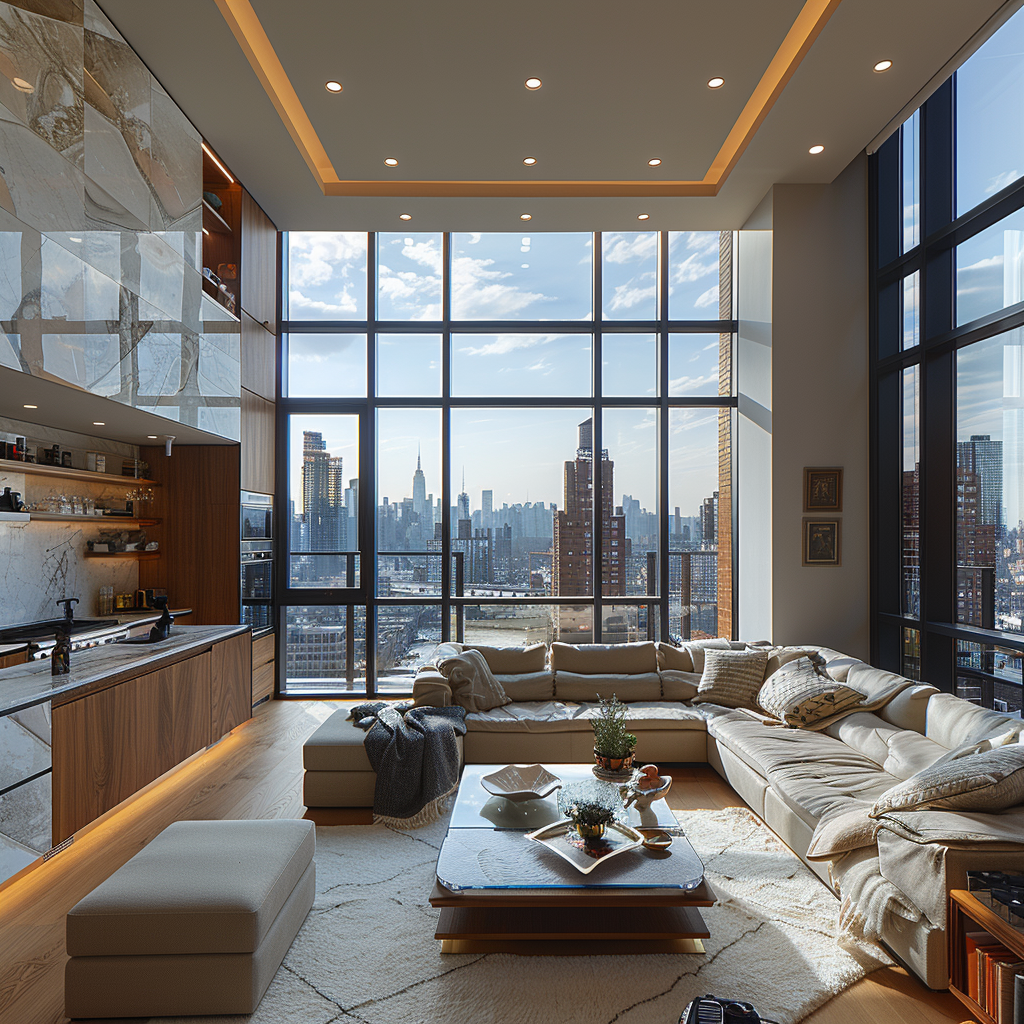
- In essence, AI's contribution to enhanced visualization tools in interior design not only optimizes the design process in terms of efficiency and cost-effectiveness but also elevates the creative potential of projects. It promises a future where the transformation of spaces can be envisioned and planned with unparalleled clarity, bringing visionary designs to life with confidence and ease.
Efficient Space Planning
- AI technologies are revolutionizing the domain of space planning, bringing unprecedented levels of efficiency and precision to the art of interior design. Through the meticulous analysis of room dimensions, functional requirements, and even the subtle nuances of natural light, AI is equipped to optimize layouts in a way that marries maximum usability with aesthetic appeal. This technological leap is especially transformative for small spaces, which often present complex design challenges.
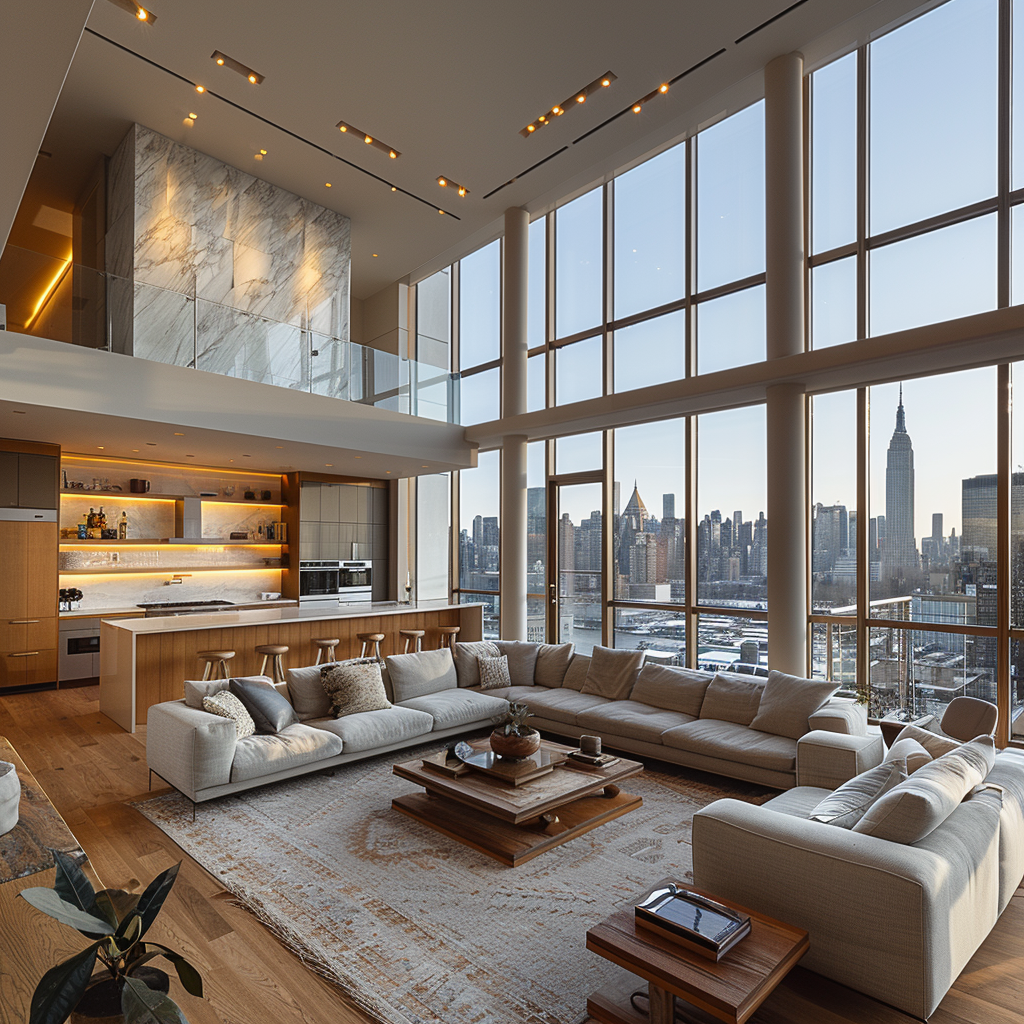
- AI's capacity to provide intelligent suggestions for furniture placement transforms the way designers approach room layouts. By considering the flow of movement and the purpose of each area within a space, AI algorithms can suggest arrangements that enhance both functionality and visual harmony. This is not just about fitting pieces into a room; it's about creating an environment that feels intuitively right, where every item has its place, contributing to the overall balance and appeal of the space.
- Moreover, AI-driven tools excel in identifying innovative storage solutions that declutter and streamline living areas without compromising on style. These suggestions are tailored to the unique dimensions and possibilities of each room, ensuring that every inch of space is utilized effectively. This is particularly crucial in small spaces, where efficient use of every square foot can significantly impact the room's functionality and comfort.
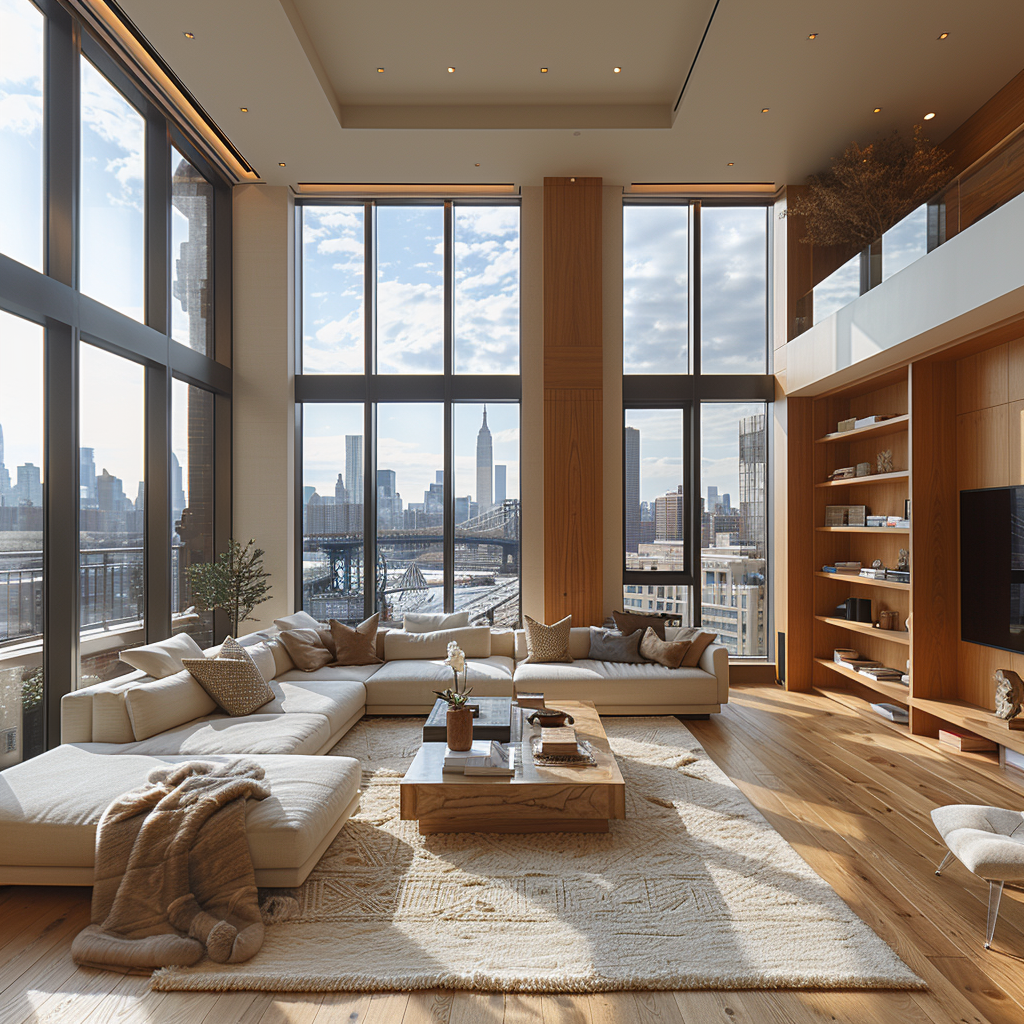
- Perhaps one of the most striking benefits of AI in space planning is its ability to harness and optimize natural light. By analyzing how light moves through a space at different times of the day, AI can guide the placement of windows, mirrors, and even the selection of reflective surfaces to enhance illumination, making spaces feel brighter, larger, and more inviting.
- The precision and efficiency offered by AI in space planning not only elevate the functionality of interiors but also open up new possibilities for creative expression. This is a boon for both designers seeking to push the boundaries of what's possible in interior design and homeowners looking to transform their living spaces into optimized, aesthetically pleasing sanctuaries. As AI continues to evolve, its role in making space planning more intuitive, efficient, and tailored to individual needs promises to redefine the future of interior design.
Sustainable and Smart Homes
- Artificial Intelligence (AI) is pioneering the movement towards sustainable and smart homes, redefining the intersection between technology and eco-friendly living. By leveraging vast datasets on energy consumption, material sustainability, and environmental impact, AI is instrumental in guiding homeowners and designers towards making informed choices that prioritize eco-consciousness without compromising on modern conveniences. This intelligent guidance extends to the selection of materials and appliances, ensuring that each component of the home not only contributes to a reduced carbon footprint but also upholds the standards of sustainability and efficiency.
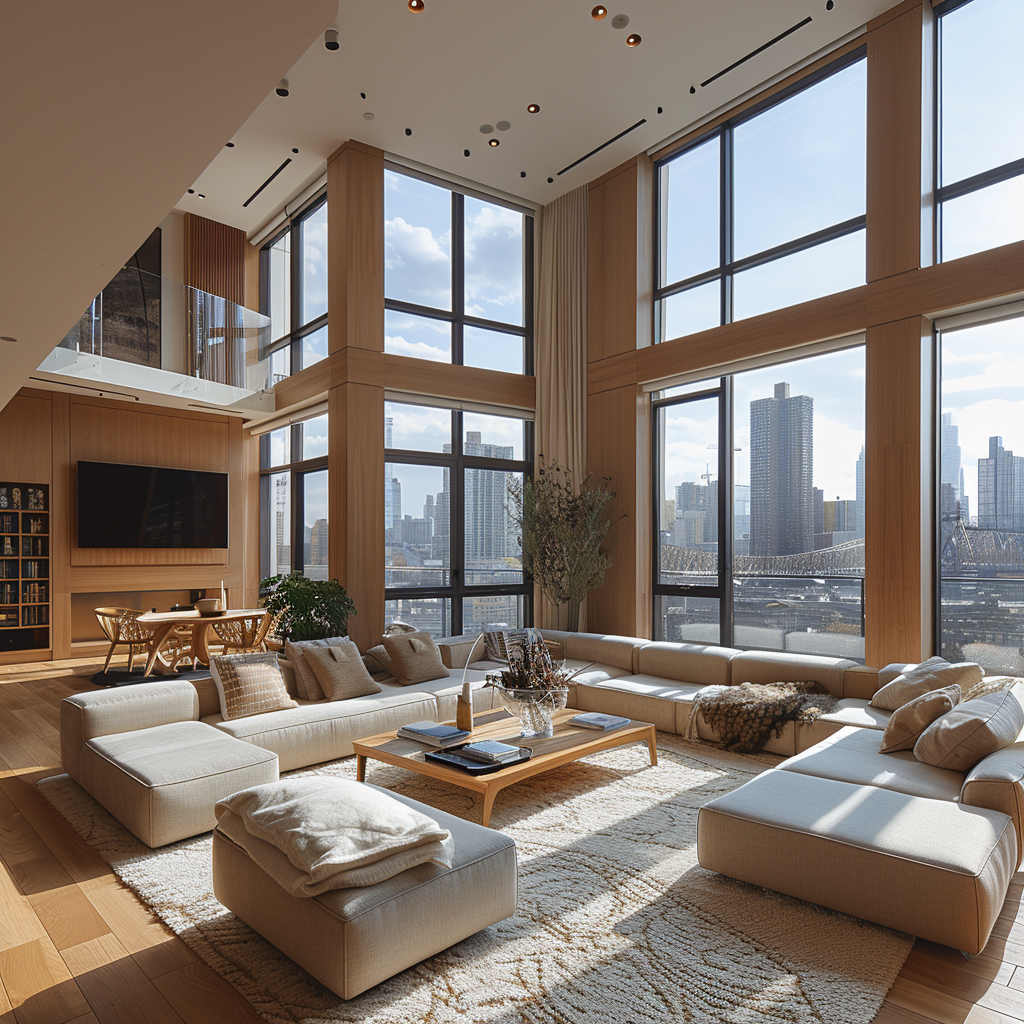
- The brilliance of AI doesn't stop at material selection; it's also transforming homes into dynamic ecosystems that intelligently adapt to the occupants' lifestyles. AI-powered smart home systems take automation to a new level, optimizing lighting, heating, and cooling systems based on real-time usage patterns. These systems learn from daily routines, adjusting the home's environment to ensure maximum comfort while minimizing unnecessary energy consumption. For instance, smart thermostats can lower the temperature when the house is empty and return it to a comfortable level by the time occupants return, offering both energy efficiency and enhanced living comfort.
- Moreover, the integration of AI into home systems facilitates a more nuanced control over the environmental impact of daily living. It allows for a detailed monitoring and management of energy use, enabling homeowners to make adjustments that lead to significant savings and a lower ecological footprint. The automation of essential systems ensures that sustainability becomes an integrated aspect of the home's operation, seamlessly woven into the fabric of everyday life.
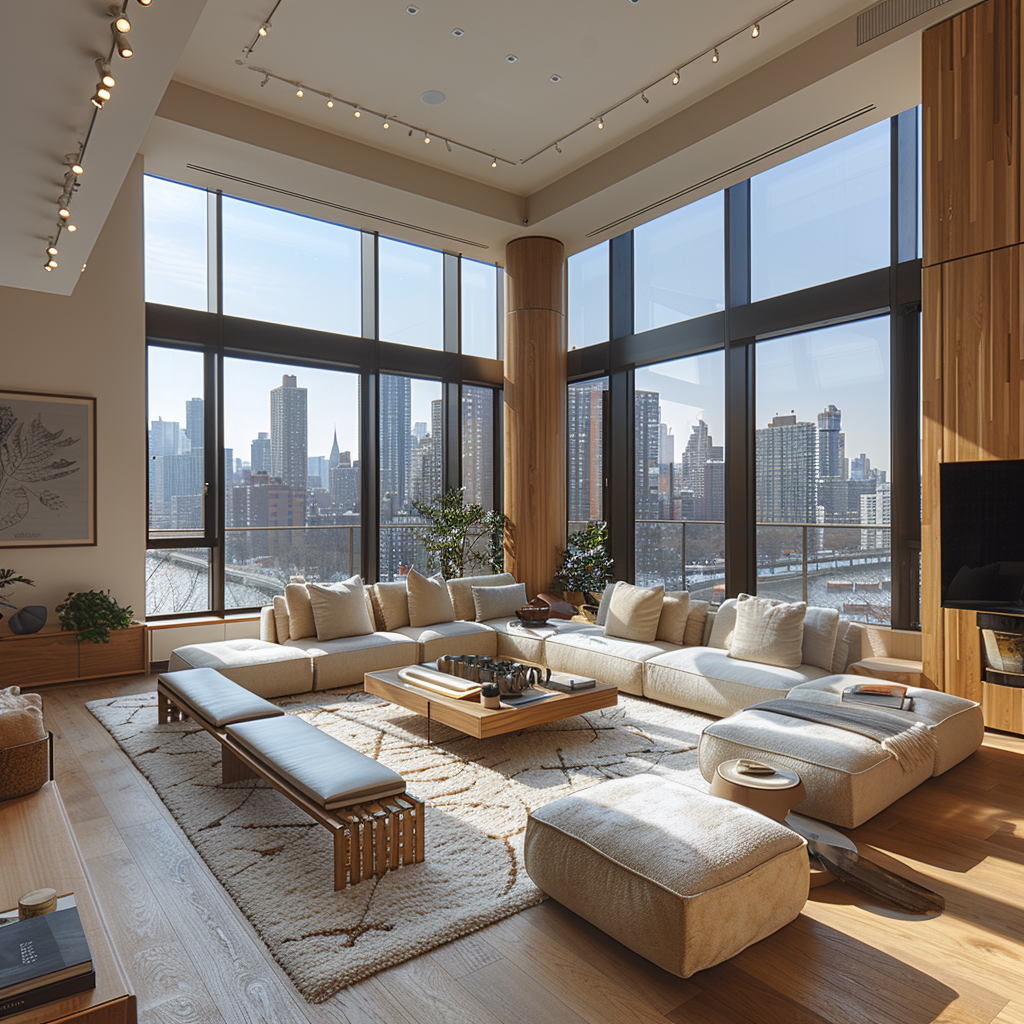
- In essence, AI's role in crafting sustainable and smart homes marks a significant stride towards a future where living spaces are not only more intelligent and responsive but also kinder to the planet. This convergence of technology and sustainability heralds a new era of home design, where efficiency, comfort, and eco-friendliness go hand in hand, powered by the innovative capabilities of AI.
Interactive and Adaptive Spaces
- The future of interior design, illuminated by the advancements in Artificial Intelligence (AI), is set to transcend traditional boundaries with the creation of interactive and adaptive living spaces. These innovative environments are designed to learn and evolve, dynamically adjusting to the inhabitants' behaviors, preferences, and even the subtle shifts in their daily routines. Imagine a home that intuitively modifies lighting levels, temperature settings, and even rearranges its layout to accommodate various activities, seamlessly transitioning from a serene morning ambiance to an energized home office, and then to a cozy family gathering space in the evening.
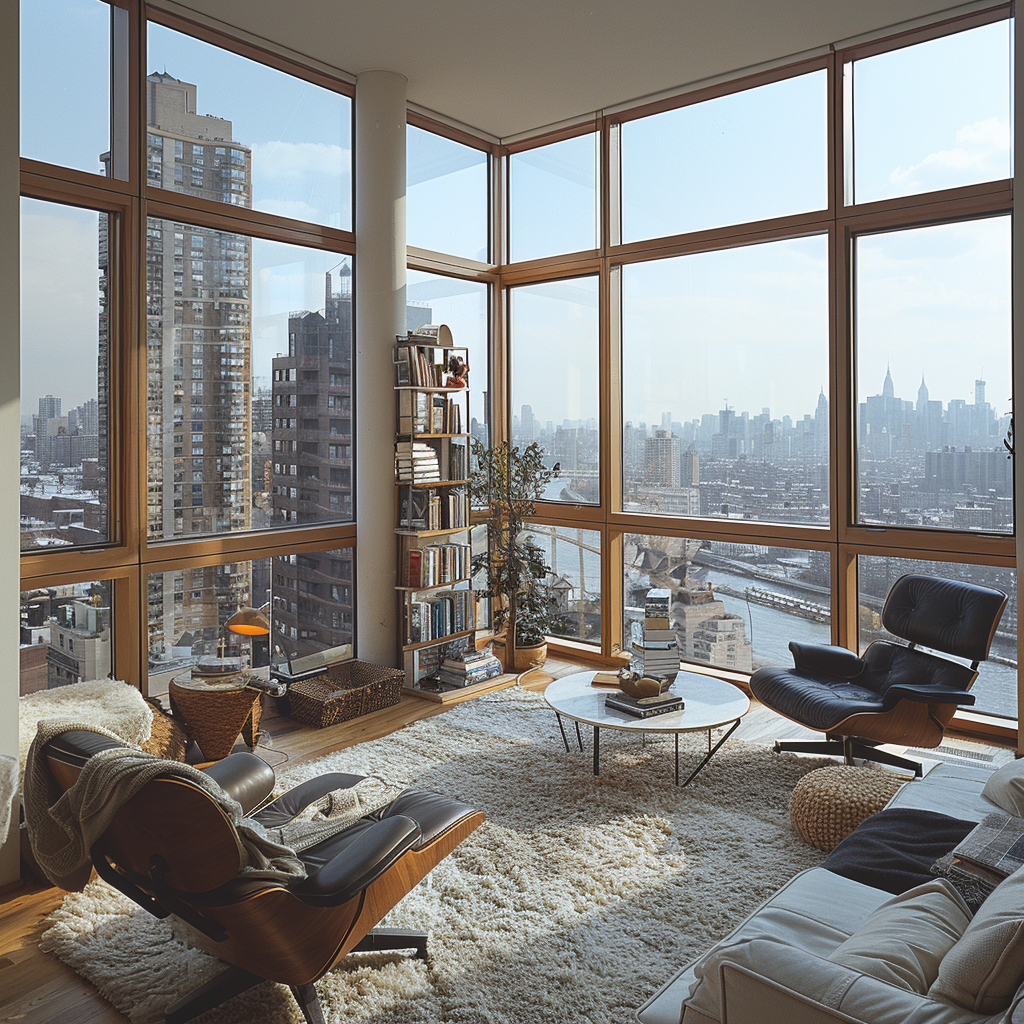
- This level of adaptability in design extends beyond mere convenience; it signifies a profound shift towards creating spaces that genuinely resonate with the occupants' lifestyle and needs. As AI integrates deeper into our homes, it brings with it the promise of environments that not only respond to commands but anticipate and adapt to changes, ensuring that the living space remains perfectly attuned to the inhabitants' life stages, preferences, and even emotional states.
- Such adaptive design represents a significant leap in enhancing the functionality and comfort of living spaces. It opens up possibilities for homes that can support aging in place, adapt to growing families, or morph according to the changing needs of remote work and learning. Moreover, this approach to design has the potential to optimize energy usage, contributing to a more sustainable living environment by adjusting resource consumption in real-time based on actual needs.
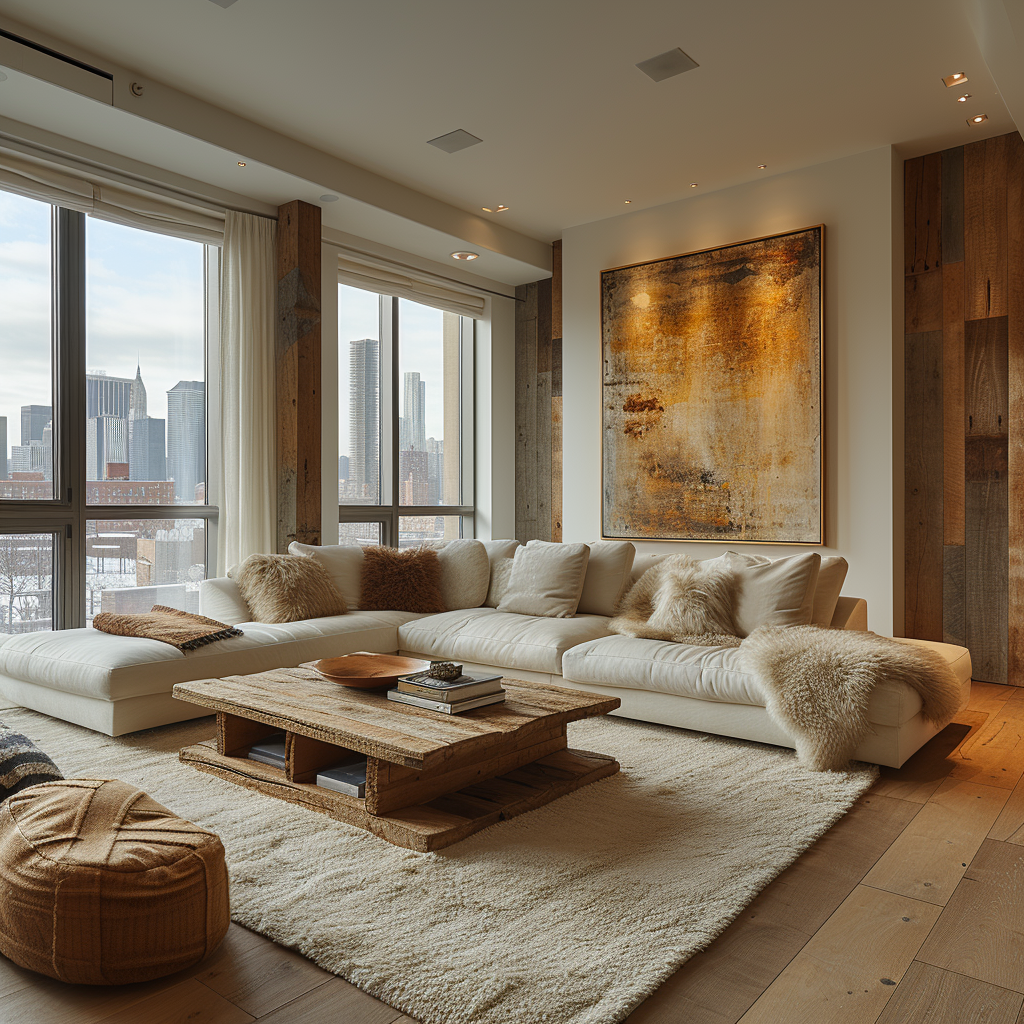
- Looking ahead, the role of AI in creating interactive and adaptive spaces heralds a new era in interior design, where technology and human-centric design converge to create living environments that are not just spaces we inhabit but intelligent ecosystems that enhance our quality of life. As we venture into this future, the possibilities for personalization, sustainability, and innovation in home design seem boundless, promising a new chapter in how we live and interact with our surroundings.
Conclusion
- The integration of Artificial Intelligence (AI) into the realm of interior design is not merely a trend but a transformative shift that redefines the very foundations of how we conceptualize and create our living spaces. This fusion of technology with design has unlocked a new dimension of personalization, efficiency, and sustainability, offering possibilities that were once considered beyond reach. AI’s capacity to analyze and adapt to individual preferences, optimize space utilization, and even predict future needs means that every aspect of home design can now be tailored to fit the unique lifestyle and aspirations of its inhabitants with unprecedented precision.
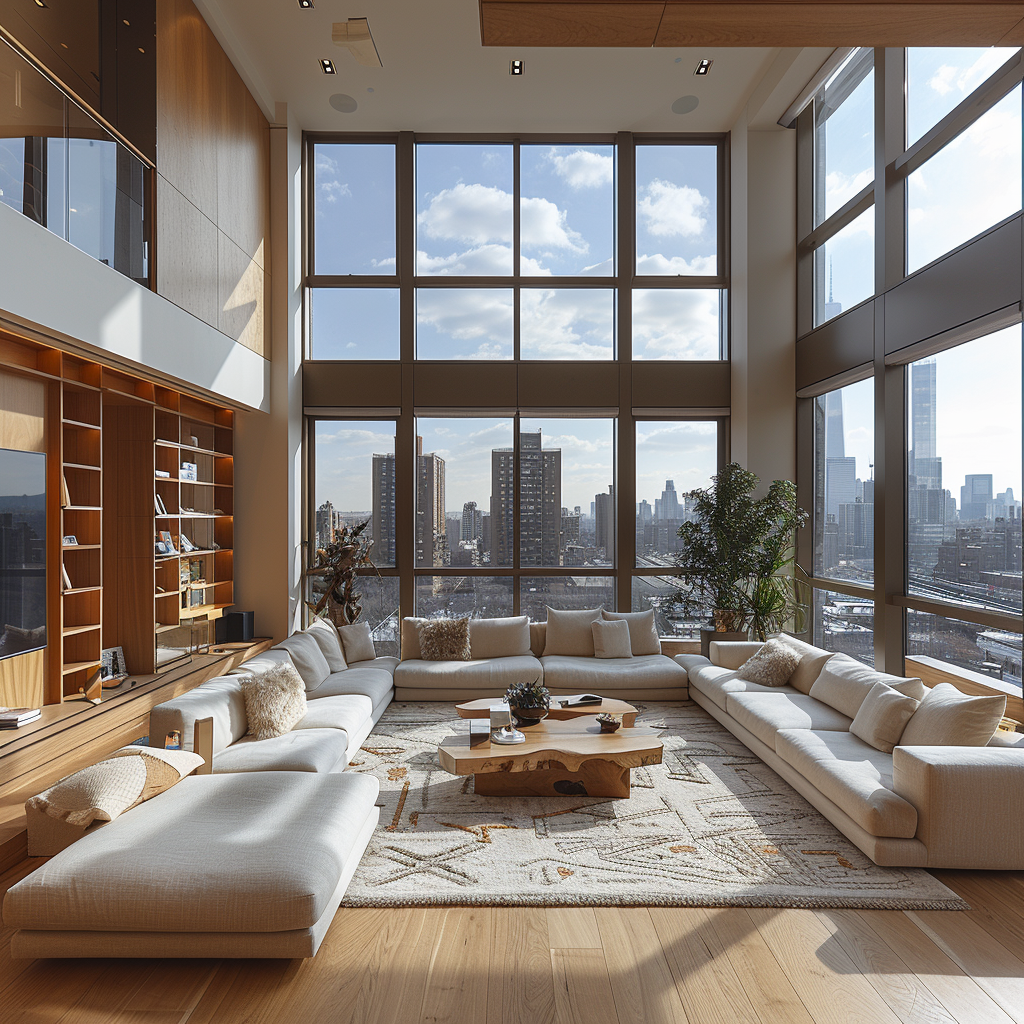
- As we stand on the brink of this exciting frontier, the potential for AI in interior design is boundless. With each advancement, we move closer to a future where homes are not just static environments but dynamic spaces that respond to and evolve with their occupants. These intelligent, adaptive living spaces promise to enhance not only the aesthetic appeal of our homes but also their functionality, comfort, and sustainability.
- For designers, AI represents an invaluable tool that augments creativity, allowing for the exploration of new materials, techniques, and configurations that push the boundaries of traditional design. Homeowners, on the other hand, stand to gain living spaces that truly reflect their personality, adapt to their changing needs, and support a more sustainable lifestyle.
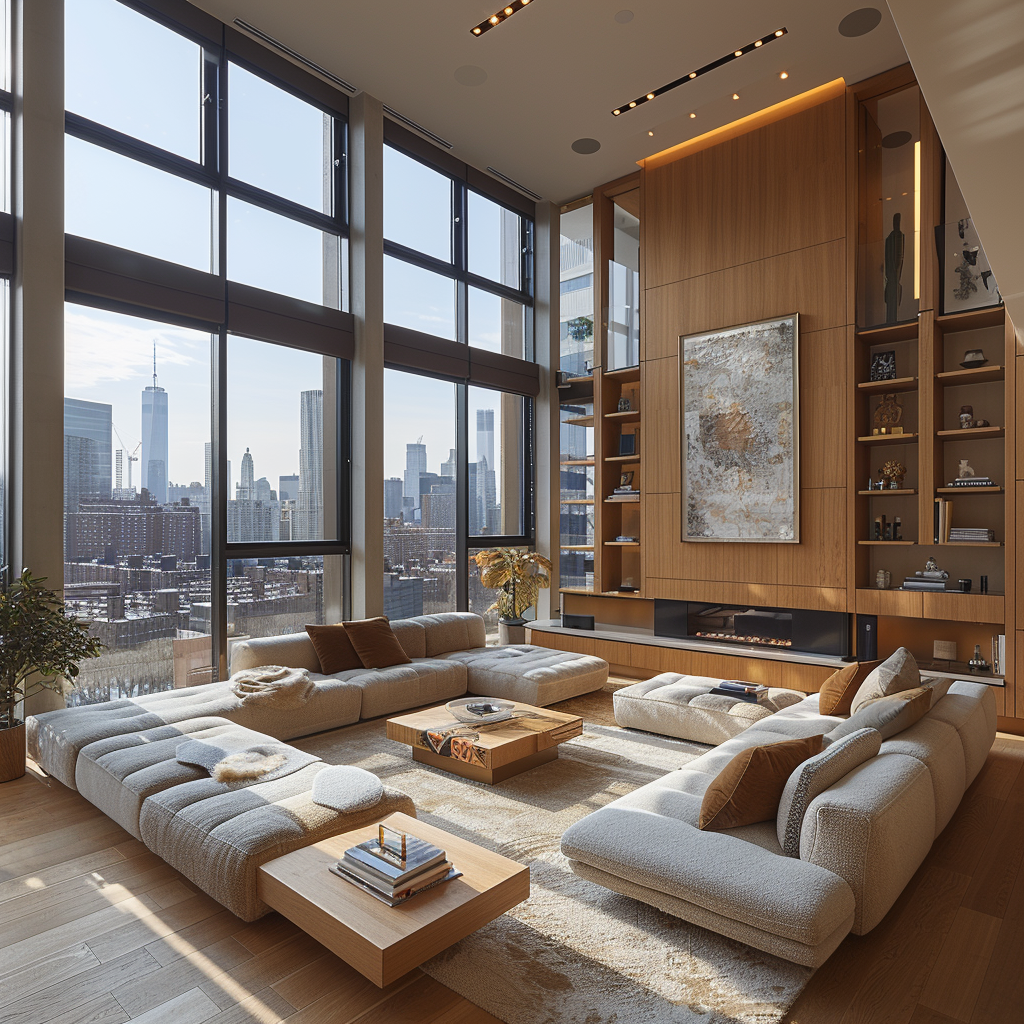
- Looking ahead, the role of AI in shaping the future of interior design is both exciting and promising. As technology continues to evolve, so too will the ways in which we design, interact with, and enjoy our living spaces. The journey towards more responsive, adaptive, and personalized homes is just beginning, with AI leading the charge towards a future where our homes are not only places we live but also intelligent partners that enhance our quality of life in every possible way.